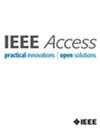Neural Network Pruning for Lightweight Metal Corrosion Image Segmentation Models
IF 3.4
3区 计算机科学
Q2 COMPUTER SCIENCE, INFORMATION SYSTEMS
引用次数: 0
Abstract
Metal corrosion detection is essential for ensuring structural safety and minimizing economic losses. While deep learning (DL)-based image segmentation has improved corrosion detection accuracy and efficiency, its high computational demands hinder deployment on resource-constrained edge devices. This study investigates lightweight DL models for corrosion segmentation by applying structured pruning to reduce computational costs while maintaining accuracy. We evaluate five segmentation architectures (U-Net, U-Net++, FPN, LinkNet, and MA-Net) and three pruning strategies (linear, automated gradual pruning, and movement pruning) on two corrosion image datasets (NEA and SSCS). Detailed trade-off analysis between model size, computational cost (MAC), and segmentation performance (IoU) reveals that pruning up to 90% sparsity leads to a基于神经网络剪枝的轻质金属腐蚀图像分割模型
金属腐蚀检测是保证结构安全、减少经济损失的重要手段。虽然基于深度学习(DL)的图像分割提高了腐蚀检测的准确性和效率,但其高计算需求阻碍了在资源受限的边缘设备上的部署。本研究研究了用于腐蚀分割的轻量级深度学习模型,通过应用结构化修剪来降低计算成本,同时保持准确性。我们在两个腐蚀图像数据集(NEA和SSCS)上评估了五种分割架构(U-Net、U-Net++、FPN、LinkNet和MA-Net)和三种修剪策略(线性、自动渐进修剪和移动修剪)。模型大小、计算成本(MAC)和分割性能(IoU)之间的详细权衡分析表明,剪枝最多可达90% sparsity leads to a $\leq 10\%$ IoU drop on SSCS and $\leq 5\%$ on NEA, demonstrating that significant compression is possible with minimal accuracy loss. However, some architectures (e.g., LinkNet) and pruning strategies (e.g., movement pruning) show significant performance deterioration, suggesting that pruning effectiveness varies across models. These findings provide insights into optimizing corrosion segmentation models for efficient deployment on edge devices, balancing accuracy and resource constraints.
本文章由计算机程序翻译,如有差异,请以英文原文为准。
求助全文
约1分钟内获得全文
求助全文
来源期刊

IEEE Access
COMPUTER SCIENCE, INFORMATION SYSTEMSENGIN-ENGINEERING, ELECTRICAL & ELECTRONIC
CiteScore
9.80
自引率
7.70%
发文量
6673
审稿时长
6 weeks
期刊介绍:
IEEE Access® is a multidisciplinary, open access (OA), applications-oriented, all-electronic archival journal that continuously presents the results of original research or development across all of IEEE''s fields of interest.
IEEE Access will publish articles that are of high interest to readers, original, technically correct, and clearly presented. Supported by author publication charges (APC), its hallmarks are a rapid peer review and publication process with open access to all readers. Unlike IEEE''s traditional Transactions or Journals, reviews are "binary", in that reviewers will either Accept or Reject an article in the form it is submitted in order to achieve rapid turnaround. Especially encouraged are submissions on:
Multidisciplinary topics, or applications-oriented articles and negative results that do not fit within the scope of IEEE''s traditional journals.
Practical articles discussing new experiments or measurement techniques, interesting solutions to engineering.
Development of new or improved fabrication or manufacturing techniques.
Reviews or survey articles of new or evolving fields oriented to assist others in understanding the new area.
 求助内容:
求助内容: 应助结果提醒方式:
应助结果提醒方式:


